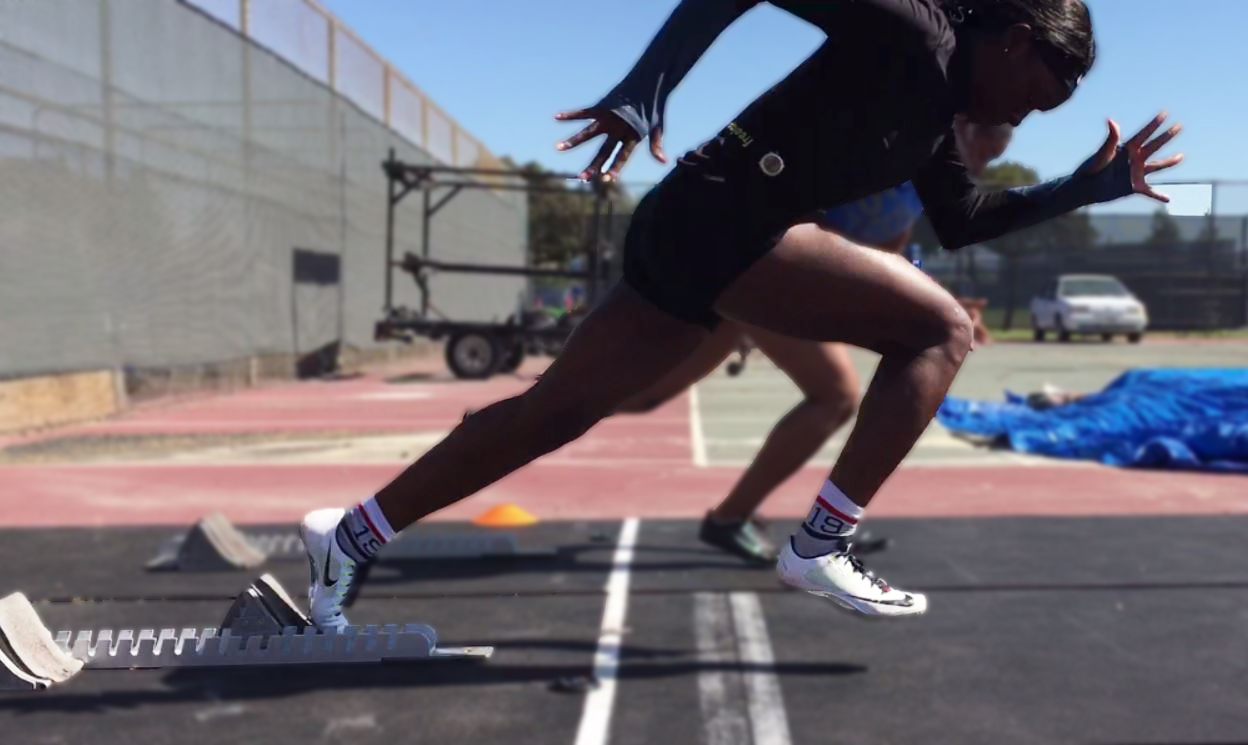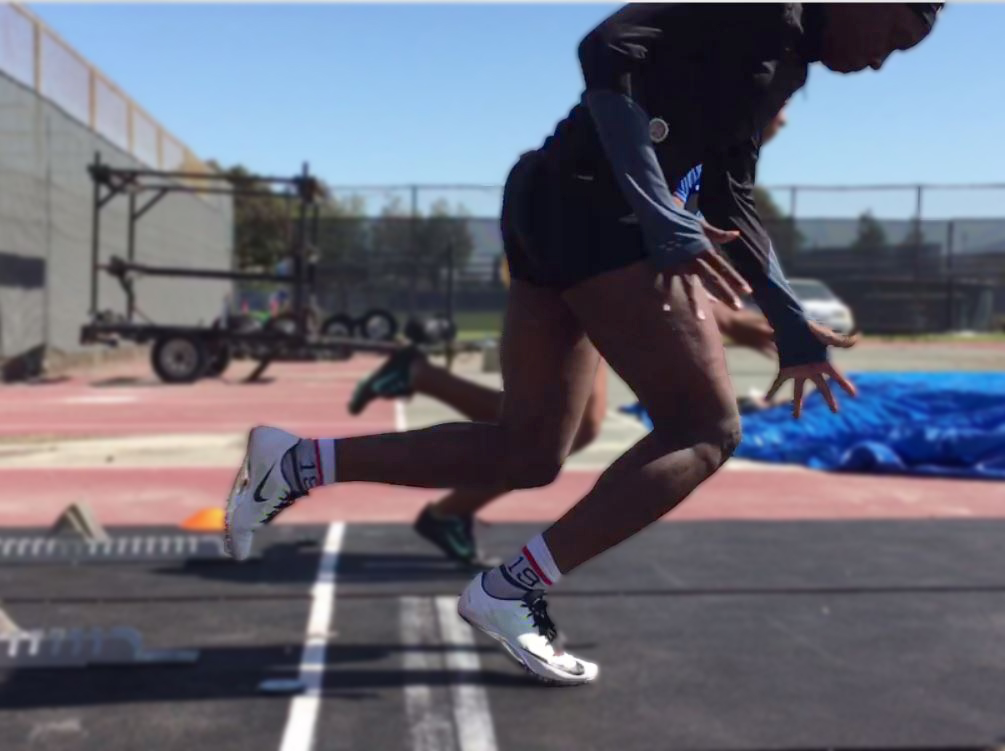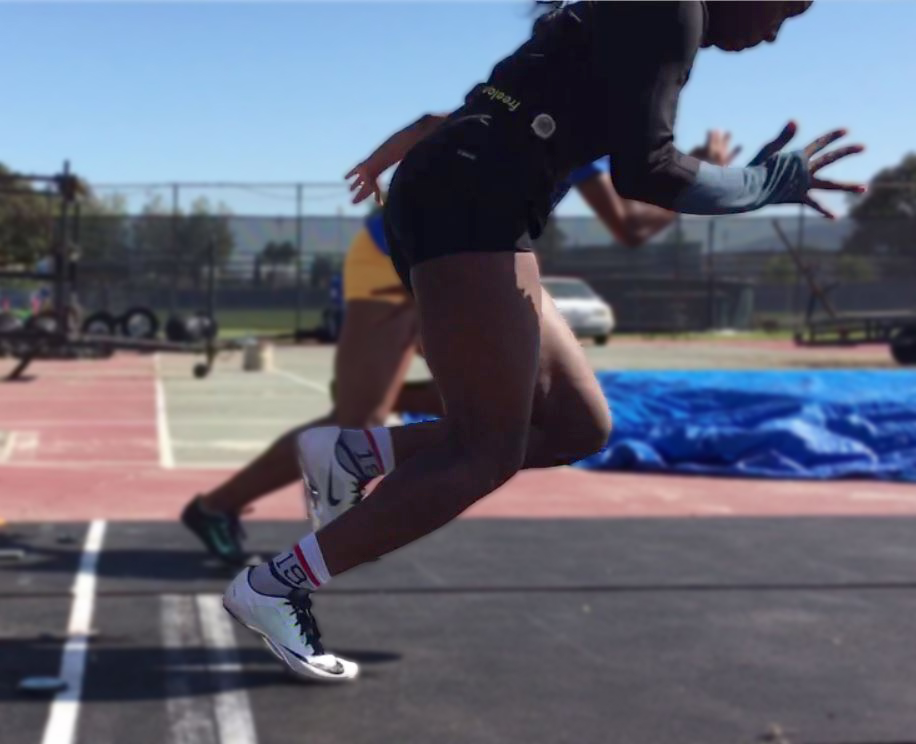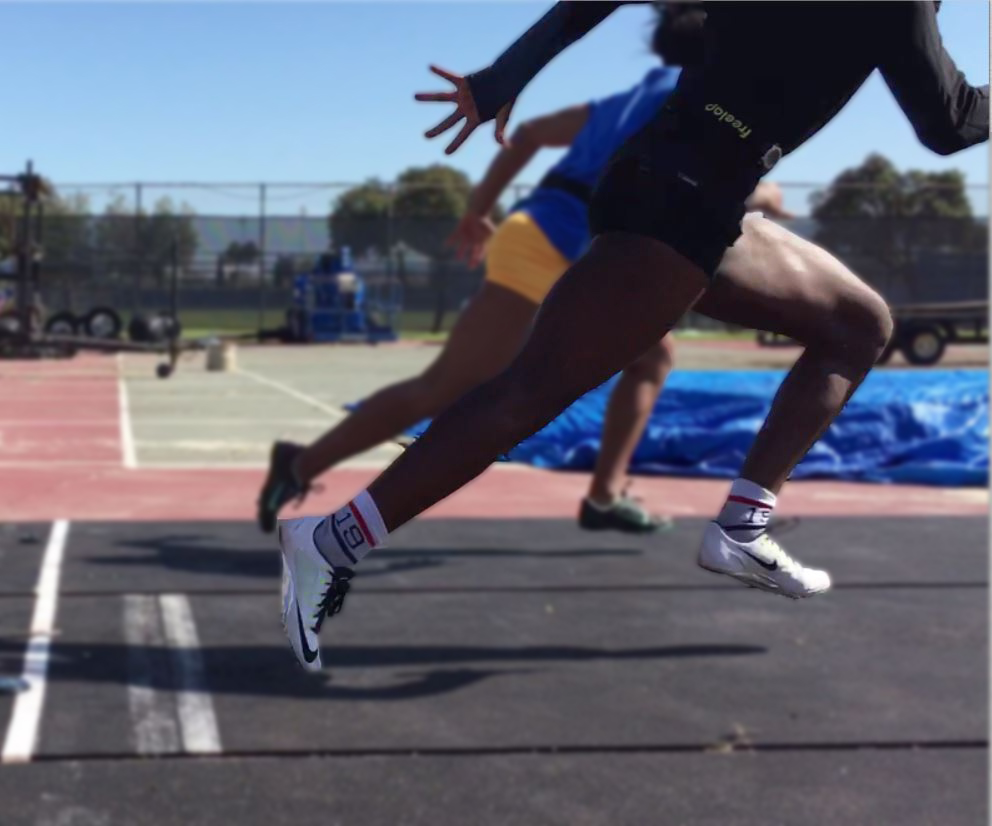Competition Considerations
100m Race Planning
The 100 meter sprint is the focal point for most track and field sprinter. Although the sprint event group includes the 60 meter, 200 meter, and 400 meter sprint races, the 100 meter sprint represents the cornerstone for fundamentals of speed, strength, power, and acceleration. As these characteristics are tantamount to a successful 100 meter race and the success of an individual sprinter, they are highly interconnected to the other three sprint events.
The 100 meter sprint is composed of five different stages—
Reaction Time—1%
Block Clearance—5%
Acceleration—64%
Maximal Velocity—18%
Deceleration—12%
Although each component is important, each component is not equal in terms of proportionality to a successful overall performance. On a percentage scale of a complete 100 meter race, reaction time accounts for 1%, block clearance accounts for 5%, acceleration accounts for 64%, maintenance of maximal velocity accounts for 18%, and the degree of deceleration accounts for 12%. It is evident that the phases of acceleration and maintenance of maximal velocity are most critical for success in a 100 meter performance (Tellez & Harewood, 2014).
The first two phases of a 100 meter performance, reaction time and block clearance, are crucial to a proper eventual acceleration phase. Focus should be placed in simultaneously and forcefully pushing off of both block pedals, driving the lead arm above the head, and driving the lead knee up and out with a high degree of intensity. This quick action should properly see a high maintenance of linear degree and an athlete should strive to maintain a spine-neutral position (Baughman, Takaha, & Tellez, 1984).
The acceleration pattern of a sprinter should be gradual and relaxed with the goal of maintaining a phase of maximal velocity as long as possible and shortening the degree of deceleration as much as possible. As noted through kinematic analysis of the 2008 and 2012 Olympic Games, gold medalist Usain Bolt continues to accelerate until nearly the 70 meter mark of a 100 meter race (Krzysztof & Mero, 2013). The goal of a new or youth sprinter should be to maintain a degree of acceleration until 30 meters and a degree of maximum velocity until 60 meters (Wells, Smith, & Taylor, 100 Meter Race Model, 2001). Too quick of an acceleration phase will cause a sprinter to have a higher degree and duration of deceleration, resulting in an overall slower time.
Following the acceleration phase and the achievement of maximal velocity, a sprinter should continue to maintain proper sprinting mechanics with a strong focus placed on stride rate and stride length. During the deceleration phase of a 100 meter performance, the individual athlete should focus on staying relaxed, while continuing to focus on stride length and stride rate. If a sprinter is to be successfully in the 100 meter sprint, these five factors and phases must be assumed and appropriately executed (Baughman, Takaha, & Tellez, 1984).





